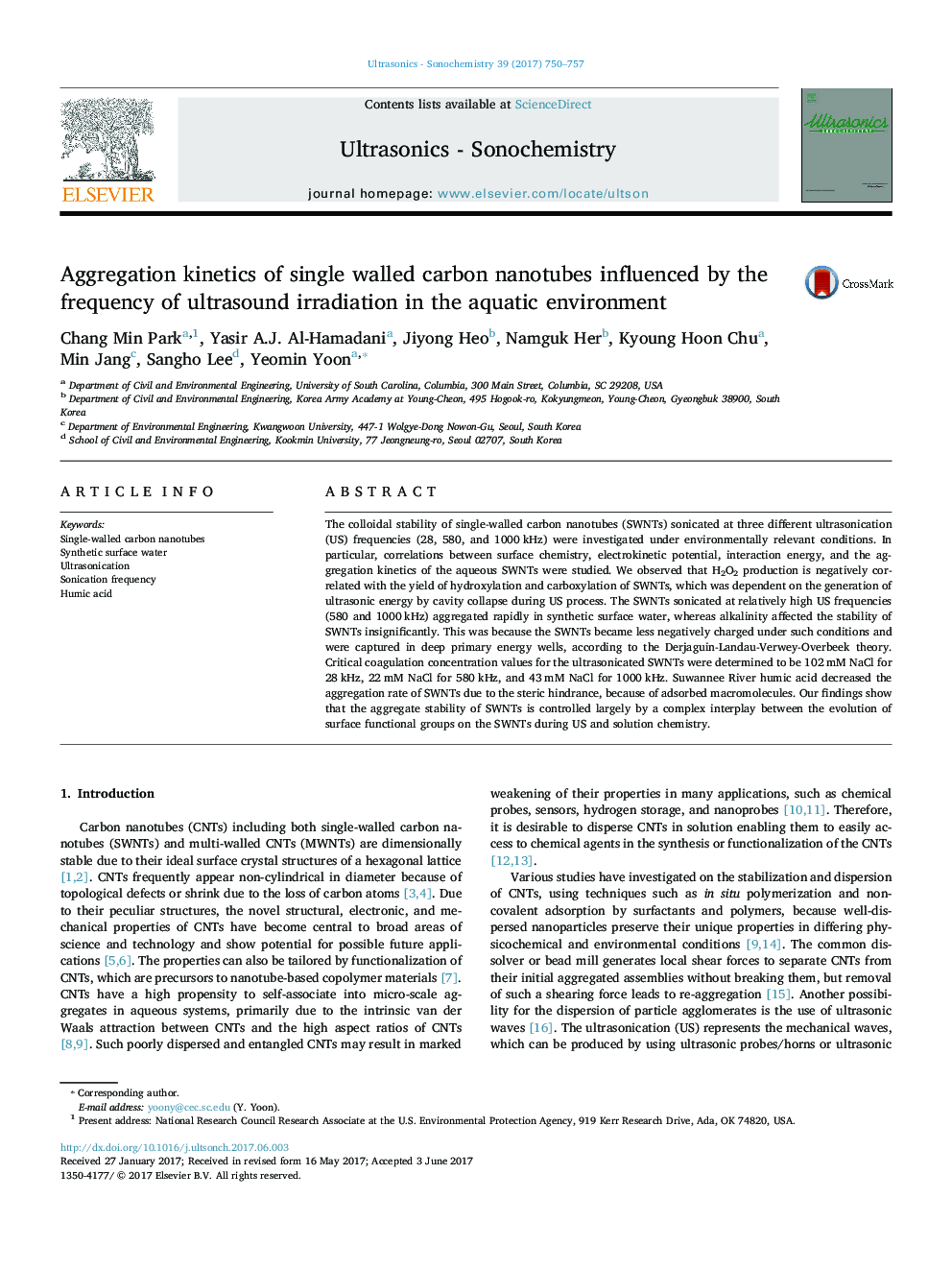| Article ID | Journal | Published Year | Pages | File Type |
|---|---|---|---|---|
| 5144602 | Ultrasonics Sonochemistry | 2017 | 8 Pages |
Abstract
The colloidal stability of single-walled carbon nanotubes (SWNTs) sonicated at three different ultrasonication (US) frequencies (28, 580, and 1000Â kHz) were investigated under environmentally relevant conditions. In particular, correlations between surface chemistry, electrokinetic potential, interaction energy, and the aggregation kinetics of the aqueous SWNTs were studied. We observed that H2O2 production is negatively correlated with the yield of hydroxylation and carboxylation of SWNTs, which was dependent on the generation of ultrasonic energy by cavity collapse during US process. The SWNTs sonicated at relatively high US frequencies (580 and 1000Â kHz) aggregated rapidly in synthetic surface water, whereas alkalinity affected the stability of SWNTs insignificantly. This was because the SWNTs became less negatively charged under such conditions and were captured in deep primary energy wells, according to the Derjaguin-Landau-Verwey-Overbeek theory. Critical coagulation concentration values for the ultrasonicated SWNTs were determined to be 102Â mM NaCl for 28Â kHz, 22Â mM NaCl for 580Â kHz, and 43Â mM NaCl for 1000Â kHz. Suwannee River humic acid decreased the aggregation rate of SWNTs due to the steric hindrance, because of adsorbed macromolecules. Our findings show that the aggregate stability of SWNTs is controlled largely by a complex interplay between the evolution of surface functional groups on the SWNTs during US and solution chemistry.
Related Topics
Physical Sciences and Engineering
Chemistry
Chemistry (General)
Authors
Chang Min Park, Yasir A.J. Al-Hamadani, Jiyong Heo, Namguk Her, Kyoung Hoon Chu, Min Jang, Sangho Lee, Yeomin Yoon,
